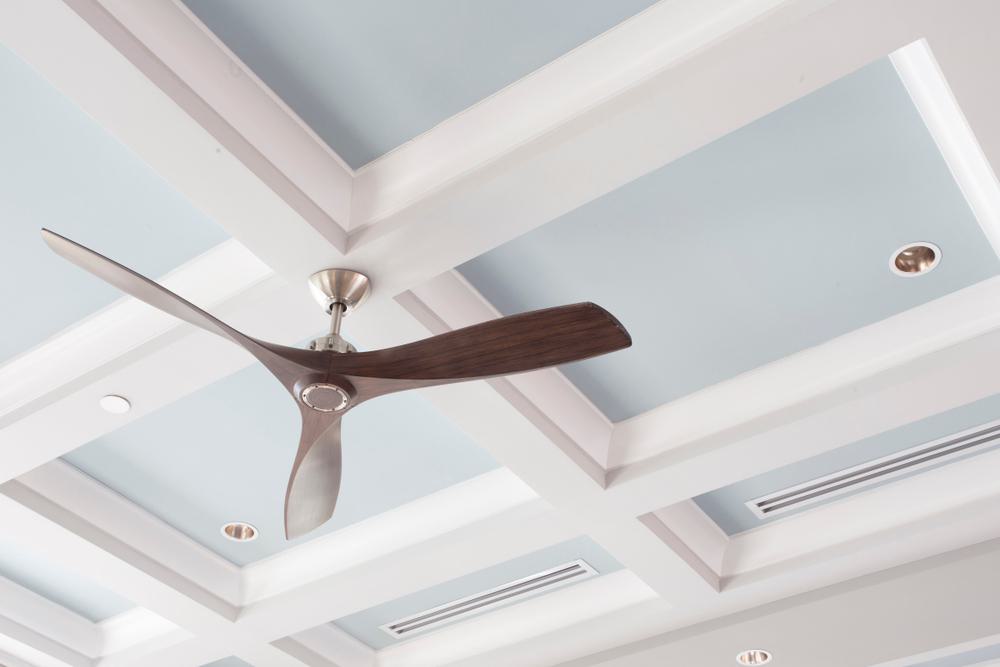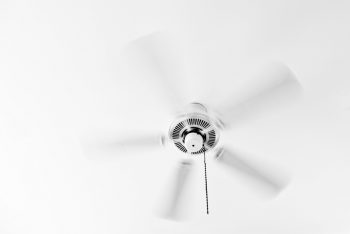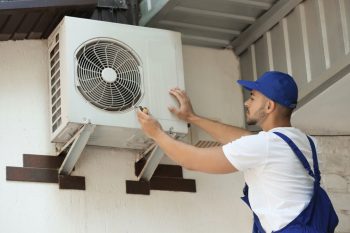
Ceiling fans are an essential part of many homes, providing cool air and improving ventilation. But what happens when your ceiling fan only works on high speed? This issue can be frustrating, especially during the hot summer months when you need your fan to work properly.
In this comprehensive guide, we’ll explore the reasons behind this issue, how to troubleshoot it, and when you should consider replacing your ceiling fan.
A ceiling fan might only work on high speed due to problems in the control box, a faulty capacitor, motor issues, a damaged pull cord, or loose screws. To fix this, you should troubleshoot by checking the control box, inspecting the pull chain, examining the capacitor, looking for motor issues, and verifying the wiring and installation. If the fan continues to only work on high speed, it may be time to consider replacing it.
Common Reasons for a Ceiling Fan Only Working on High Speed
There are several reasons why a ceiling fan might only work on high speed. These include:
- Problems in the control box: The control box regulates the fan’s speed. If it has issues, it may prevent the fan from working at different speeds.
- Faulty capacitor: The capacitor is a vital component that affects the fan’s speed. If it’s faulty, the fan may only run on high speed.
- Motor issues: If the fan’s motor is damaged or overheating, it can cause the fan to work only at high speed.
- Damaged pull cord: If the pull cord is damaged, the fan may not work at all speeds.
- Loose screws: Loose screws can affect the fan’s speed and may even pose safety risks.
How Does a Ceiling Fan Speed Control System Work?
A ceiling fan speed control system works by adjusting the electrical power supplied to the fan motor, thus controlling its rotational speed. There are two main types of speed control mechanisms: solid-state controls and capacitor controls.
Solid-state controls alter the level of power in the fan motor, controlling the speed of the fan. They can be adjusted using a dial or slider. Capacitor controls work by switching between different in-series capacitances. The fan speed is controlled by changing the motor circuit to a predefined coil winding.
Signs of a Faulty Capacitor
If your ceiling fan’s capacitor is faulty, it can affect the fan’s ability to change speeds. Common signs of a bad capacitor include:
- The fan doesn’t start or starts slowly
- The fan runs slowly even at the highest speed setting
- Certain speed settings aren’t working
- The motor makes humming sounds
- There’s a melting or burning smell due to overheating
How Does a Faulty Fan Motor Impact the Operational Speed?
A faulty fan motor can cause the fan to run slower than usual or not spin at all. Common issues that can lead to a faulty fan motor include a blown or faulty capacitor, overheating motor, low voltage, dirt and debris, and loose screws or improper installation.
Troubleshooting Steps
To determine why your ceiling fan is only working on high speed, follow these steps:
- Turn off the power and check the control box.
- Inspect the pull chain or chain switch assembly.
- Examine the capacitor.
- Look for motor issues.
- Clean and lubricate the ball bearings.
- Check for loose screws.
- Verify the wiring and installation.
- Test the speed controller.
Risks of Using a Ceiling Fan That Only Works on High Speed
Continuing to use a fan that only works on high speed can pose health risks, compromise the fan’s structural integrity, exacerbate motor and capacitor issues, and increase energy consumption.
When to Consider Replacing Your Ceiling Fan
Consider replacing your ceiling fan if it makes unusual sounds, doesn’t cool your home effectively, requires repeated repairs, isn’t energy-efficient, doesn’t match your decor, poses safety concerns, or if repairing it is more expensive than replacing it.
Remember, the lifespan of a ceiling fan is typically around 10 years, but higher-quality fans may last 15-20 years. If your fan is nearing the end of its expected lifespan and experiencing issues, it might be more cost-effective and practical to replace it.
In conclusion, a ceiling fan that only works on high speed can be a nuisance, but understanding the possible causes and solutions can help you address the problem effectively. Whether you choose to repair or replace your fan, always prioritize safety and consider consulting a professional if you’re unsure about the process.
Frequently Asked Questions
How do I know if my ceiling fan’s control box is faulty?
If the control box is faulty, you may notice that the fan’s speed settings are not working properly or the fan may not work at all. In some cases, the fan may also make unusual noises. It’s best to have a professional inspect the control box to confirm if it’s faulty.
What should I do if I smell a burning or melting smell from my ceiling fan?
If you smell a burning or melting smell from your ceiling fan, turn it off immediately. This could be a sign of a serious issue, such as a faulty capacitor or motor. Consult a professional to inspect the fan and identify the problem.
How do I check if the pull chain on my ceiling fan is damaged?
If the pull chain is damaged, it may be stuck, broken, or it may not pull at all. You can check for damage by visually inspecting the chain and attempting to pull it. If it doesn’t work properly, it may need to be replaced.
Can I repair a faulty ceiling fan myself?
While it’s possible to troubleshoot and repair minor ceiling fan issues on your own, it’s always best to consult a professional, especially if you’re dealing with electrical components. Working with electricity can be dangerous if you’re not experienced.
How often should I clean my ceiling fan?
It’s recommended to clean your ceiling fan at least once every season. Regular cleaning can help prevent dust and debris from building up, which can cause the fan to run slower and can even damage the motor over time.












